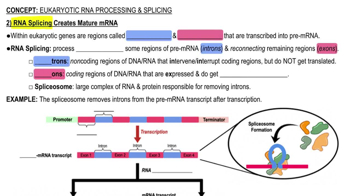Multiple Choice
Which of the following mutations, occurring just after the start codon in the mRNA is likely to have the most serious effects on the polypeptide product?
83
views
 Verified step by step guidance
Verified step by step guidance Verified video answer for a similar problem:
Verified video answer for a similar problem:

